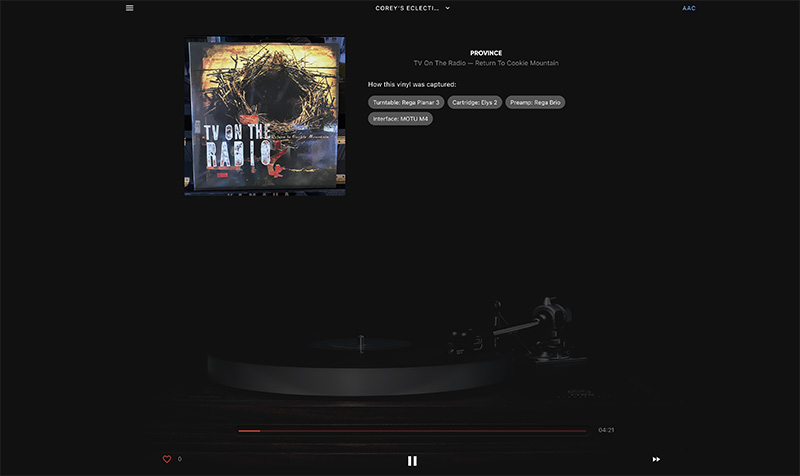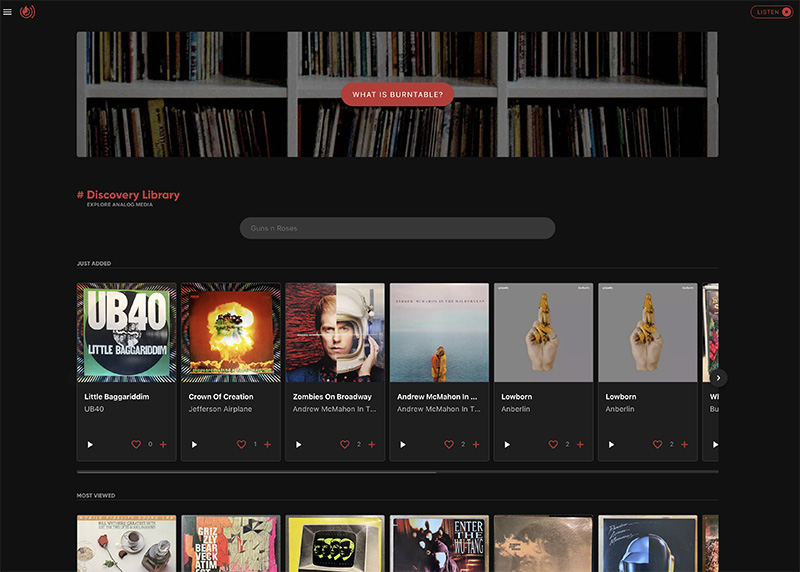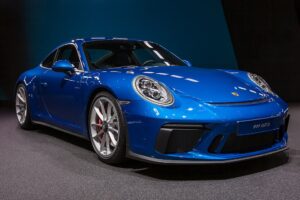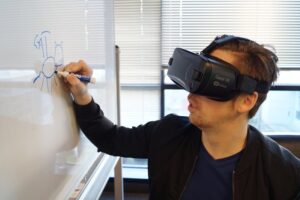Vinyl or digital? It’s a loaded question to which the answer changes drastically depending upon the individual it is directed toward. Audiophiles have their arguments teed up, ready to fly through the air in an accusatory barrage.
“Records contain an analog copy of sound pressed into vinyl in the shape of the original sound wave. Digital music files are merely the waveform of the original sound transformed into a stream of ones and zeroes,” an analog purist might begin.
The digital advocate would logically rebut with “digital recordings contain at least 40,000 samples or snapshots per second so we can accurately reconstruct the original, continuous analog waveform up to the limits of human hearing (frequencies up to 20,000 Hz).”
“Vinyl has an intangible fullness subtly missing from music streamed from the cloud,” the purist returns.
“But digital is so much more convenient.”
“But vinyl is so much cooler.”
Both sides make cogent arguments, but what if there were a way to have your record and stream it, too?
Burntable co-founder Aaron Peterson believes Analog vs. Digital is a false dichotomy.
Burntable is the world’s first dedicated site designed to ease the digital preservation of vinyl recordings.
With Burntable, artists and aficionados alike can upload their ultra-rare pressings to the site using a simple interface that preserves the integrity of an LP in a lossless format.

With the right analog-to-digital conversion chip, a properly designed input buffer and a responsibly engineered PCB layout, one can capture the purity, essence, image and dimension of analog–free from artifacts when played back through equally competent digital-to-analog converters. In pursuit of this, Peterson helped build DropStation — the companion hardware to Burntable that converts analog into digital.
Innovation & Tech managing editor Corey Noles sat down with Peterson to discuss the finer points of sound engineering and the revelatory technology Burntable and DropStation use to bring high-quality vinyl to the ears of millions. This interview has been edited for length and clarity.
Innovation & Tech Today: Let’s start out by learning a little about your background.
Aaron Peterson: Well, it’s mostly software and then I had a little bit of a music mixing and production career in the early 2000s. I opened a small recording studio with my friend, who’s also my Burnable co-founder. We opened a recording studio in Koreatown and I had been messing with audio recording since the mid-nineties. I’m a musician. I play pretty much everything. That’s how I learned about audio and about the different qualities of audio. And that’s how I learned about digital. So I’ve been messing with analog to digital conversion for many years and watching that change. I was born in 1978, but I still caught the tail end of the analog world.
Eventually, Chris, my co-founder, got me into collecting vinyl. I think it was Steve Albini’s master of In Utero by Nirvana that he Let me just capture onto my MOTU audio interface. He said ‘I just want you to hear what this sounds like. It’s gonna blow your mind.’
It was like everything that mastering engineer and that LA operator cutting that record, cutting that lacquer, everything they put into that. We could hear everything crystal clear, you got the whole thing. You got the whole ride of the dynamics. I feel like it sparked something in me.
I listened in my car and again, it was like, “Why doesn’t anything sound like this anymore?”
And that’s how it started. I was right in the beginning of the pandemic and I thought, “let’s work on this. We’re nuts. Like, who cares? It might be the end of the world. Let’s just do something crazy. Who cares?”
So that’s how it started.
Peterson on Analog vs. Digital
AP: The discussion’s never been analog versus digital. Digital can be done fantastically and it is a lot of the time. But then you compare some old masters that only exist on vinyl to what’s out there on Apple lossless or whatever. It doesn’t even come close. And I could just as easily say, which is true, there are some terrible pressings. I have quite a few of them. When I’m just going through Target grocery shopping, I swing by their little vinyl aisle.

I have about a 50% success rate on their pressings. The good ones are amazing. The Weekend: The Highlights is the way to hear the Weekend’s body of work, and I’m not even into pop, but that is like whoever took the time to cut that Laquer was somebody who was like, “I’m gonna make this sound really good.” That’s the cool part of the whole thing to me. It became like, “well, can we get a streaming license? How do we make this legal?” So first we wanted people to just be able to hear firsthand — this is what this pressing sounds like.
So if you’re gonna spend this much money for it in the discogs marketplace, at least to know what you’re getting into. And then the second part was, “well if we have all these files, how can we go about letting people listen to them legally?” We talked to a few copyright attorneys and figured out we could get this noninteractive streaming license, kind of like Pandora used to be.
I&TT: How did you come up with the idea for Drop Station?
AP: Well, the Drop Station came after Burnable was created. What happened was we realized the equipment we’re using to capture vinyl is in the software designed to record music. It’s designed for music production. I’ve been like a Raspberry Pie user, Arduino and all that stuff. I’ve been doing electronics, building my own guitar pedals forever. For one of my birthdays when I was 13, my parents bought me a book called Electronics Projects for Musicians. And it had a flexible 45 final in the back that you could listen to the examples of the projects on a turntable.
I still have that thing somewhere. I think I still have the record too. What happened was it was like, “well, how can we make this easier?” And not only that, we have to make a convenience product, right? But at the same time, it has to sound really good. And by sound really good, I mean, not do anything to the signal.
On this, we basically want to make sure that the signal that comes in is exactly what occurred so that it could be captured by the analog to digital converter and be an accurate representation of what’s on the turntable and what’s on the cartridge, and of course pressing itself.
So the idea was to make something like an easy interface to just capture the records while you’re listening to them. Why not just let people take their phone out and just hit capture and capture what’s happening in a passive way that’s not only electronically and, I should say electronically passive, meaning that the signal can still pass through to your amp.
We just kind of tap into it and capture and convert it to digital. The idea was to create something to make it easier for people to get stuff on Burnable. We did not know so many people were gonna come. We had an interest list from our website of like 1600 people, so quickly getting emails from all over the world where it’s like, “I have this collection of like rare Swedish metal,” or, “I have 1800 LPs and they’re all awesome and nobody can stream this stuff.”
The full podcast with Peterson is available at innotechtoday.com/innovation-tech-talks.











